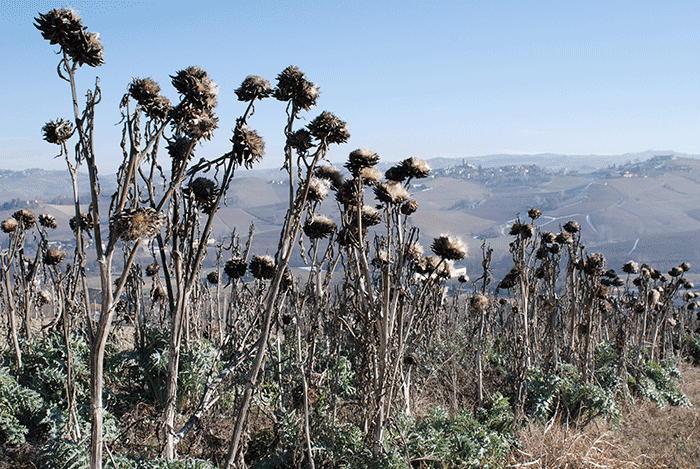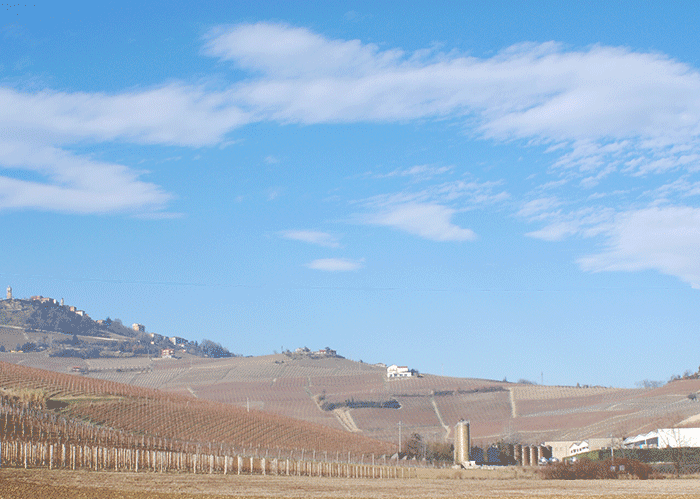Could prized Barolo vineyard, Le Rocche dell’Annunziata, be ‘Vigna Grande’ (Grand Cru) material?
Author: David Berry Green
The release of the 2010 Barolo vintage in January 2014 marks a new phase in the evolution of how the 166 Barolo sottozone (sub zones) – or menzioni geografiche aggiuntive as they are officially called – will be communicated.
So should a producer of Barolo 2010 wish to label his wine Cannubi, for example, a minimum of 85 percent of the fruit must originate from within this sub zone (menzioni geografiche aggiuntive); the maximum yield remains at 56hl/ha (as per the classic blended Barolo).
With this in mind, I recently participated in a blind tasting (watch the video here) of 13 wines from one of Barolo’s prized vineyards, Le Rocche dell’Annunziata in the commune of La Morra, to ascertain whether it has a unique character; whether this character is consistent across the producers labelling it as such; which style of vinification (traditional or modern) befits the vineyard, and if, subjectively, it has the makings of a Vigna Grande (Grand Cru).
The producers, whose wines were represented were: Erbaluna, Rocche Costamagna, Mauro Veglio, Gagliasso, Andrea Oberto, Renato Ratti, Trediberri, Roberto Voerzio, Revello, Renato Corino, Aurelio Settimo, Giovanni Accomasso, Paolo Scavino. The vintage was mainly 2009. Absent were wines from Franco Molino and Bartolo Mascarello (who don’t release a Le Rocche label, preferring to blend their fruit into a ‘Barolo’).
Historically: according to A Wine Atlas of the Langhe (Slow Food Editore 2008), Le Rocche dell’Annunziata di La Morra (or ‘Le Rocche’) was first documented in 1194, as part of a wider ‘Marcenascum’ vineyard, lying in the care of the Benedictine monks residing in the abbey of San Martino di La Morra. More recently, in 1979, it was rated by winemaker and local historian Renato Ratti as a “Grand Cru of Barolo” in particular the original lower section (see below). In Michael Garner and Paul Merritt’s study of the wines of Alba Barolo / Tar and Roses (Century 1990) they allude to the vineyard’s pronounced aromatic qualities.
Terroir: lying between the hamlet of Annunziata and La Morra itself, the vineyard appears to have grown in three stages: the first, original part of the vineyard covered the lower, south- and west-facing 18.80ha below the road to Torriglione. Then, sometime between 1988 and 1994, it appears to have grown to encompass the slightly higher (around 300 metres above sea-level) southeast facing plots just above this road – those of Andrea Oberto, Bartolo Mascarello, Gigi Mascarello, Paolo Scavino and Giovanni Accomasso, before one final push to the borgata of Boiolo way above at 371msl, taking in the large swathes belonging to Rocche Costamagna and Erbaluna, so amounting to a 30ha sub zone. The soil composition, in keeping with much of La Morra, is generally described as younger Tortonian marne di Sant’Agata fossils; calcareous clay, more (chalky) white on the higher slopes and siltier on those lower down. Indeed a recent 2013 study of Le Rocche by geologist Gribaudo of Turin, shows a unusually high proportion of silt, between 40 and 50 percent. This is a characteristic shared with the lower vineyard of Cannubi Boschis in the commune of Barolo; going someway to explaining Le Rocche’s silky texture to taste.
Organoleptically: Baroli made from Le Rocche dell’Annunziata fruit tends to show a blush, fuchsia, strawberry-garnet colour; a soft, English-rose scented nose, delicate yet intense with limpid, swooning kirsch raspberry fruit, the palate is full but silky, with gentle, flowing velvety summer fruit and hints of tea/hay. So: perfume, poise, kirsch intensity, suave, elegant, persistent.
Authenticity: those producers whose wines, when tasted blind, captured this identity seemed to be: Erbaluna (Vigna Rocche 2009), Rocche Costamagna (Rocche dell’Annunziata 2009), Gagliasso Mario (Rocche dell’Annunziata 2009), Andrea Oberto (Rocche 2009), Trediberri (‘Selezione 40 mesi’ 2009), Fratelli Revello (Rocche dell’Annunziata 2009), Aurelio Settimo (Rocche dell’Annunziata 2008), and Giovanni Accomasso (Rocche 2001).
By contrast the Mauro Veglio (Rocche dell’Annunziata 2009), reminded me of Coonawarra Cabernet; Renato Ratti’s Rocche 2009 was strangely sweet, heavy with oak and mint; Roberto Voerzio’s Rocche dell’Annunziata Torriglione 2009 shared more with Serralunga, being uncharacteristically pale red and effete; that of Renato Corinno (Rocche 2009) echoed more the wines of Monforte, being ruby red, square and soaked in French oak; while Paolo Scavino (Rocche dell’Annunziata Riserva 1999) was black and swarthy sweet, thick with what seemed to be atypical black notes, reminiscent of Aglianico or Cabernet (?)
Viti/Vini: the results of the tasting pointed to a traditional approach to viticulture (reasonable yields/plant densities, leaving bunches intact, minimal fertilisation) and vinification (25 day plus macerations, static not roto tanks, no concentration of the must, affinamento/elevage in 16hl-plus large botti) as bringing out the best of the Rocche dell’Annunziata fruit. That said, two modernists, Andrea Oberto and Flli Revello, appear to have tempered the influence of their vinification, reigning back on new (French) oak to allow the delicate fruit to shine through.
Vigna Grande (Grand Cru)? Historically the vineyard has always been judged to be something special; the terroir, notably in the amphitheatral lower section, facing southeast/southwest at around 300 metres above sea-level on a high proportion of silt; substantiates why, organoleptically, it tastes finer than the stereotypical Barolo from La Morra, as shown by over 60 percent of wines tasted above. Maybe for these reasons it should be ranked alongside other prized Barolo vineyards such as Brunate, Cerequio, Vigna Rionda, Monprivato, Falletto, Cannubi, Monvigliero, Bussia. Hence perhaps why the Paolo Scavino cantina allegedly paid €900,000 for 0.8ha of Rocche Costamagna’s most western plot in 2012.
If you’re inspired to try Barolo Le Rocche dell’Annunziata then I strongly recommend you buy a bottle of Trediberri’s 2009 Barolo ‘Selezione 40 mesi’, which is 100 percent Rocche dell’Annunziata, but not labelled as such due to the failings of Italian bureaucracy!





[…] Rocche dell’Annunziata is synonynmous with body, elegance and complexity. […]